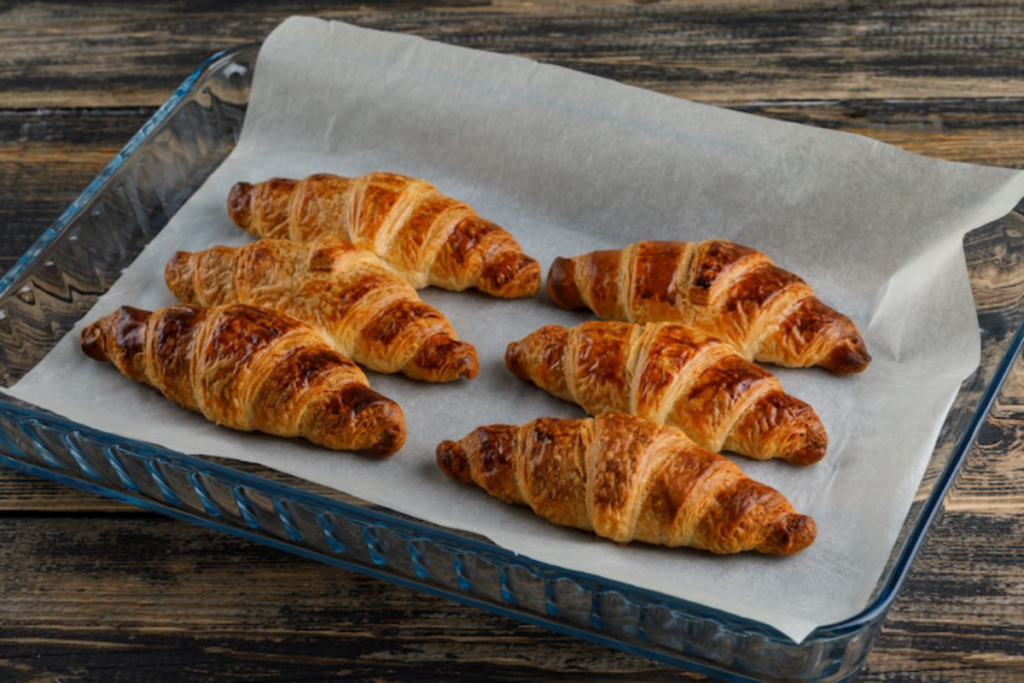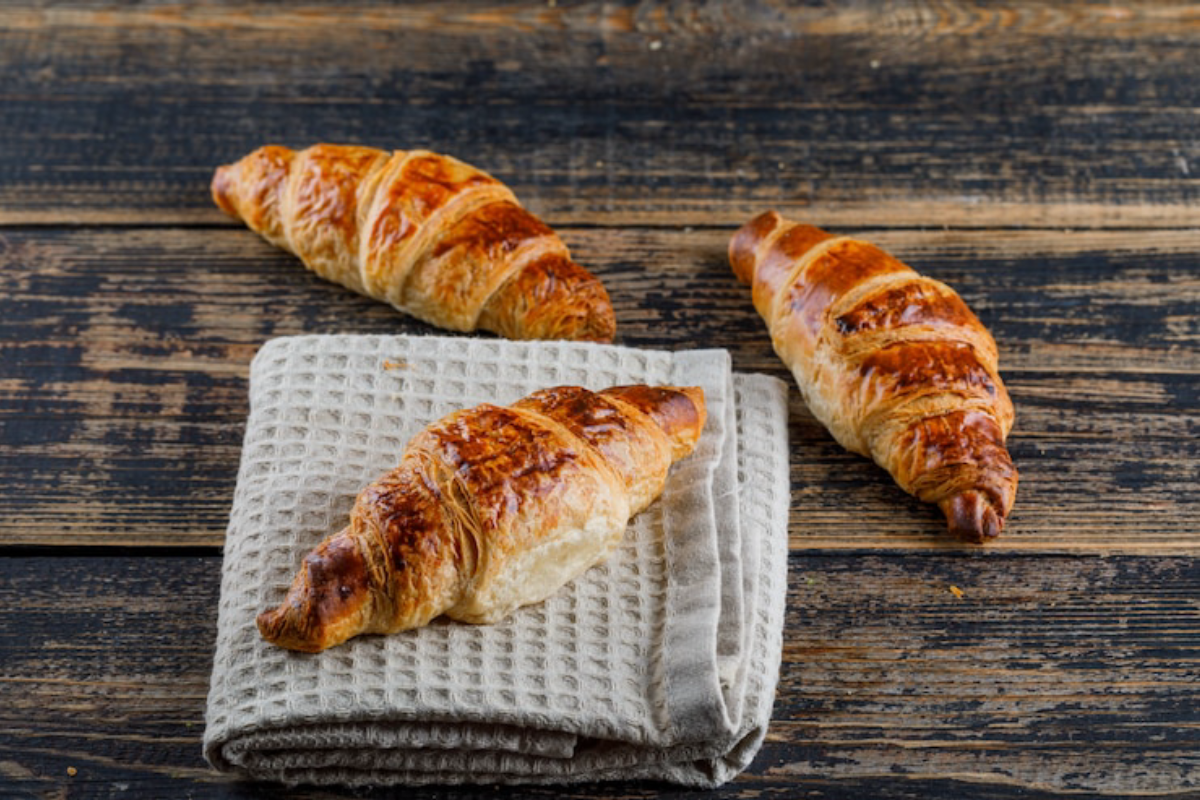When we think of flaky, buttery pastries, the croissant often comes to mind. But did you know that there’s a German version of a croissant known as the Gipfeli? This lesser-known cousin of the croissant has its own unique charm and flavor. Though it shares similarities with the traditional French croissant, the Gipfeli is a staple in Switzerland and parts of Germany, offering a slightly different taste and texture.
In this article, we’ll dive into the world of the Gipfeli—how it compares to the French croissant, its history, and how you can make your own at home. If you’ve ever been curious about how Germany’s pastry culture compares to France’s, or if you want to bake something new, keep reading to uncover the secrets behind the German version of a croissant.

The Origins of the Gipfeli: Germany’s Take on the Croissant
Before we dive into the recipe, let’s take a look at the history of the German version of a croissant, the Gipfeli. While the croissant is quintessentially French, its origins trace back to Austria, particularly the Austrian Kipferl, a crescent-shaped bread that has existed for centuries. The Kipferl was traditionally a denser pastry, and it wasn’t until the recipe made its way to France that it became the flaky croissant we know today.
The Birth of the Gipfeli
Similar to how the Kipferl evolved into the croissant in France, it also transformed into the Gipfeli in Switzerland and Germany. The word “Gipfeli” is derived from the German word “Gipfel,” meaning “summit” or “peak,” likely referring to the pastry’s crescent shape. Though it’s inspired by the same origins as the croissant, the Gipfeli has become a beloved pastry in its own right.
Unlike the buttery, rich croissant, the Gipfeli is often less flaky and less buttery, with a slightly chewier texture. It’s a staple in Swiss bakeries and is widely enjoyed across Germany, particularly in the southern regions.
Key Differences Between a Croissant and a Gipfeli
While the croissant and the Gipfeli may look similar at first glance, there are a few key differences that set them apart. Understanding these distinctions helps highlight why the German version of a croissant offers a unique twist on this classic pastry.
1. Ingredients
The ingredients used in the croissant and Gipfeli are largely similar, but it’s the proportions and butter content that make a noticeable difference.
- Croissant: The French croissant is known for its high butter content, which creates its signature flaky layers. Made with flour, butter, water, yeast, sugar, and salt, croissants rely heavily on a lamination process that layers butter between sheets of dough.
- Gipfeli: While Gipfeli use similar ingredients—flour, yeast, sugar, and salt—they often contain less butter, resulting in a denser texture. Some Gipfeli recipes even use margarine instead of butter, which changes the flavor and structure.
2. Texture
The croissant’s defining feature is its airy, flaky texture that melts in your mouth. This is a result of the lamination process, where layers of butter are folded into the dough, creating thin, crisp layers when baked.
In contrast, the Gipfeli is typically less flaky and has a firmer, denser crumb. Its texture is more bread-like, making it feel more substantial than the croissant. Some Gipfelis may still have a slight flakiness, but it is much more subdued.
3. Shape and Size
While both pastries share the crescent shape, the Gipfeli is often smaller and less curved than the croissant. The ends of the Gipfeli are usually more tapered, and the overall pastry is slightly thicker.
4. Flavor
Croissants are beloved for their rich, buttery flavor, but Gipfelis are generally milder. The reduced butter content in the Gipfeli makes it less indulgent than its French counterpart, and its flavor is more subtle, which allows it to be versatile for both sweet and savory variations.
How to Make the German Version of a Croissant: The Classic Gipfeli Recipe
Ready to try making your own German version of a croissant? Here’s a step-by-step guide to creating the classic Gipfeli. This recipe will walk you through the process of making a delicious, authentic Gipfeli at home.
Ingredients for Gipfeli
To make approximately 12 Gipfeli, you’ll need the following ingredients:
- 3 ½ cups (450g) all-purpose flour
- 1 ¼ cups (300ml) warm milk
- 1 packet (7g) active dry yeast
- 3 tablespoons sugar
- 1 teaspoon salt
- ½ cup (115g) unsalted butter or margarine, softened
- 1 egg (for egg wash)
- Optional: poppy seeds or sesame seeds for garnish
Step 1: Activate the Yeast
In a small bowl, dissolve the sugar in warm milk. Sprinkle the yeast over the milk mixture and let it sit for 5-10 minutes until it becomes foamy. This step is crucial for activating the yeast and ensuring your Gipfeli rise properly.
Step 2: Prepare the Dough
In a large mixing bowl, combine the flour and salt. Pour in the yeast mixture and begin mixing until a dough forms. Knead the dough on a lightly floured surface for about 5-7 minutes, or until smooth and elastic.
Once the dough is ready, place it in a lightly oiled bowl, cover it with a kitchen towel, and let it rise in a warm place for 1-2 hours, or until it has doubled in size.
Step 3: Roll and Shape the Dough
After the dough has risen, punch it down to release any air bubbles. Divide the dough into two equal portions. Roll each portion into a circle, about ¼ inch thick, and cut each circle into six equal triangles.
Starting from the wide end of each triangle, roll the dough towards the point, forming a crescent shape. Tuck the ends slightly to create the classic Gipfeli shape.
Step 4: Second Rise
Place the shaped Gipfeli onto a baking sheet lined with parchment paper. Cover them with a towel and let them rise again for about 30-45 minutes. This second rise is crucial for achieving a soft, airy texture inside the pastry.
Step 5: Egg Wash and Bake
Preheat your oven to 375°F (190°C). In a small bowl, whisk the egg with a tablespoon of water to create an egg wash. Brush each Gipfeli with the egg wash to give them a shiny, golden finish when baked. If you like, sprinkle poppy seeds or sesame seeds on top for added flavor and texture.
Bake the Gipfeli for 15-20 minutes, or until they are golden brown and firm to the touch. Let them cool on a wire rack before serving.
Sweet and Savory Variations of the Gipfeli
One of the joys of the German version of a croissant is its versatility. Gipfeli can be enjoyed plain, but they also lend themselves well to both sweet and savory fillings. Here are some variations you can try:
Sweet Gipfeli Fillings
- Chocolate: For a sweeter version, add a small piece of chocolate in the center of each triangle before rolling it up. The chocolate will melt inside the Gipfeli as it bakes, creating a gooey, delicious filling.
- Fruit Jam: Add a spoonful of your favorite fruit jam (such as raspberry or apricot) before rolling the dough for a fruity twist.
- Nutella: Spread a thin layer of Nutella on the dough before rolling for a rich, chocolate-hazelnut flavor.
Savory Gipfeli Fillings
- Cheese and Ham: Add a slice of ham and cheese to the center of each triangle before rolling. The cheese will melt, and the ham will provide a savory contrast to the dough.
- Herbed Cream Cheese: Spread a layer of herbed cream cheese on the dough before rolling for a savory, creamy filling.
- Spinach and Feta: Place a spoonful of sautéed spinach and crumbled feta cheese inside each triangle for a Mediterranean-inspired version of the Gipfeli.
How to Serve the German Version of a Croissant
Whether you’re enjoying a traditional plain Gipfeli or one of the delicious variations mentioned above, there are plenty of ways to serve and enjoy this German version of a croissant.
Classic Breakfast Pairing
In Germany and Switzerland, it’s common to serve Gipfeli with a hot cup of coffee or tea for breakfast. They’re often enjoyed with butter and jam on the side, making them a simple but satisfying morning meal.
As a Snack
Gipfeli also make for a perfect snack throughout the day. Their sturdy texture makes them easy to transport, and they pair well with savory dips like hummus or spreads like cream cheese.
Frequently Asked Questions About the German Version of a Croissant
How Is a Gipfeli Different From a French Croissant?
While both pastries share a crescent shape, the German version of a croissant, the Gipfeli, is less flaky and has a denser texture than the French croissant. It also contains less butter and has a milder flavor, making it more suitable for both sweet and savory variations.
Can I Make Gipfeli Without Butter?
Yes! Many traditional Gipfeli recipes use margarine instead of butter, which changes the texture slightly but still results in a delicious pastry. Margarine can create a slightly less rich flavor, but it also gives the Gipfeli a firmer texture.
Can I Freeze Gipfeli?
Absolutely! Gipfeli freeze well. After baking, let the pastries cool completely, then wrap them individually in plastic wrap and store them in an airtight container. When you’re ready to enjoy them, simply thaw them at room temperature or warm them in the oven for a few minutes.
Conclusion: Discover the Charm of the German Version of a Croissant
The German version of a croissant, known as the Gipfeli, is a delightful twist on the classic French pastry. While it shares the same crescent shape as its French cousin, the Gipfeli offers a unique experience with its denser, less flaky texture and milder flavor. Its versatility allows it to be enjoyed plain or with a variety of sweet or savory fillings, making it a staple in Swiss and German bakeries.
Gipfeli is the perfect choice for breakfast, snacks, or even as an accompaniment to coffee or tea. Whether you’re enjoying it with butter and jam in the morning or filled with cheese and ham for a savory treat, the Gipfeli brings a bit of European tradition to your table.
Making Gipfeli at home is an easy and rewarding experience that lets you explore a different side of European pastry-making. Now that you know the key differences between a croissant and a Gipfeli, why not try baking your own batch and experience the charm of this delicious pastry firsthand?
